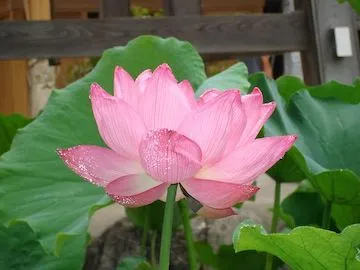THE FIRST NOBLE TRUTH

The four noble truths in Buddhism are at the core of the Buddha’s teachings. It encompasses the truth about why we suffer and what it is, what causes this suffering and where it originates from, that there is a way to get rid of the suffering and it’s causes, and that there is a noble way of practices to be followed that will lead to the cessation of suffering and to a taintless way of being that is no longer bound to the suffering way of life and becoming.
Not knowing the Four Noble Truths is what keeps us back:

“Monks, it is because of not understanding and not penetrating the Four Noble Truths that you and I have roamed and wandered through this long course of samsara [cycle of becoming and suffering].” — SN V.431
And with the understanding of the Four Noble Truths, one establishes Right View, that is the start of the noble Eight-fold Path:

“When, friends, a noble disciple understands suffering, the origin of suffering, the cessation of suffering, and the way leading to the cessation of suffering, in that way he is one of right view… and has arrived at this true Dhamma.” — MN I.48
So, in a step by step manner, the Buddha explains what each truth is about and how these truths relate to each other:

1. FIRST NOBLE TRUTH: The Noble Truth of Suffering (dukkha)
- “And what is suffering?
- Birth is suffering
- ageing is suffering
- sickness is suffering
- death is suffering
- sorrow, lamentation, pain, grief, and distress are suffering
- not to obtain what one wants is suffering.
In short, the five aggregates affected by clinging are suffering.” — MN I.48
The Mahasatipatthana Sutta in the Digha Nikaya adds an important explanation to the above quote from the Majjhima Nikaya. Not to obtain what one wants is suffering, but also ‘the association with something that one does not like is suffering’, and the ‘disassociation with something that one does like is suffering.’ Not to gain something you really want leads to suffering, and to lose something that you really like leads to suffering as well. Likes and dislikes stem from the situation where reality of perception does not match a preconceived notion of reality that one favors, or where expectations and outcomes of situations do no line up with the actual results of reality as they happen. The Sutta continues to explain all that what is considered suffering:

“And what, monks, is sorrow? Whenever one, monks, is affected by various kinds of loss and misfortune, that are followed by this or that kind of painful state of mind, by sorrow, by mourning, by sorrowfulness, by inward grief, and by deep inward woe—this, monks, is called sorrow.”
“And what, monks, is lamentation? Whenever one, monks, is affected by various kinds of loss and misfortune, that are followed by this or that kind of painful state of mind, by wailing and crying, by lamentation, by deep wailing, by deep lamentation, by the state of deep wailing and deep lamentation—this, monks, is called lamentation.”
“And what, monks, is pain? If there is, monks, any kind of bodily pain, any kind of bodily unpleasantness or any kind of painful or unpleasant sensation as a result of bodily contact—this, monks, is called pain.”
“And what, monks, is grief? If there is, monks, any kind of mental pain, any kind of mental unpleasantness or any kind of painful or unpleasant sensation as a result of mental contact—this, monks, is called grief.”
“And what, monks, is distress? Whenever one, monks, is affected by various kinds of loss and misfortune, that are followed by this or that kind of painful state of mind, by tribulation, by distress, affliction with distress and affliction with great distress—this, monks, is called distress.”
“And what, monks, is the suffering of being associated with what one does not like? Wherever and whenever one finds unpleasant, disagreeable or disliked objects of sight, sound, smell, taste, touch or of the mind, or, whenever and wherever one finds that there are wishers of one’s own misfortune, harm, difficulties or of one’s own insecurity; if one gets associated, one meets, one comes into contact or gets combined with them—this, monks, is called the suffering of being associated with what one does not like.”
“And what, monks, is the suffering of being disassociated with what one does like? Wherever and whenever one finds pleasant, agreeable or liked objects of sight, sound, smell, taste, touch or of the mind, or, whenever and wherever one finds that there are wishers of one’s own fortune, prosperity, comfort or of one’s own security, like mother and father, like brother and sister, like friends and colleagues or relatives; if one gets disassociated, one does not meet, one does not come into contact or does not get combined with them— this, monks, is called the suffering of being disassociated with what one does like.”
“And what, monks, is not getting what one desires? In beings, monks, who are subject to birth the desire arises: “Oh, truly, that we were not subject to birth! Oh, truly, may there be no new birth for us! ” But this cannot be obtained by mere desire; and not to get what one wants is suffering.” [The same applies to ageing, sickness, death, sorrow, lamentation, pain, grief, and distress]
The whole cycle from birth to death and clinging to these forms of becoming is what makes one suffer, as these five aggregates of becoming are impermanent, subject to change, are not self; and as an object of identity and individuality they cause the person to suffer, when they identify with it as: ’this is what I am.’
“And what, monks, is the noble truth of suffering? It should be said:

The five aggregates subject to clinging; that is,
- the form aggregate subject to clinging,
- the feeling aggregate subject to clinging,
- the perception aggregate subject to clinging,
- the volitional formations aggregate subject to clinging,
- the consciousness aggregate subject to clinging.” — SN V.425

I will flag comment spam at 1% strength. If you keep on spamming my post, I will flag you at 100%. I don't care if you have limited English abilities, write a couple of sentences about this article, no copy-paste, please. I will flag: one sentence comments, links to your blog and begging for up-votes and follows. Also, I will flag comments that have nothing to do with my blog's article. I will also check your comment section to see if you have been comment spamming on other blogs.


 A link to My Blog
A link to My Blog